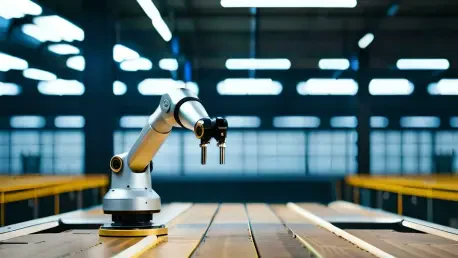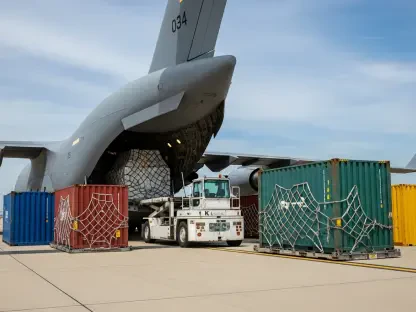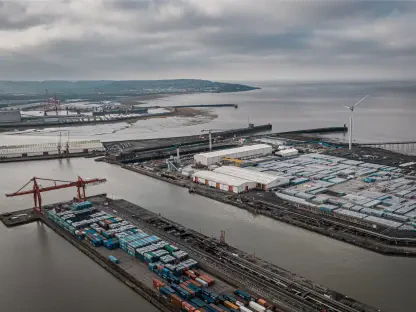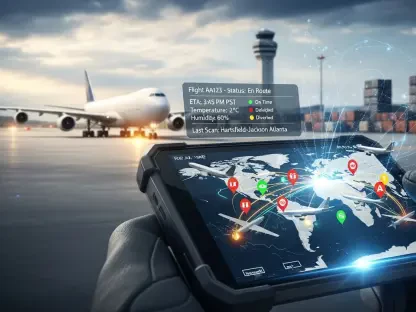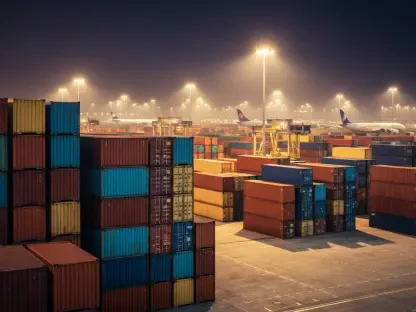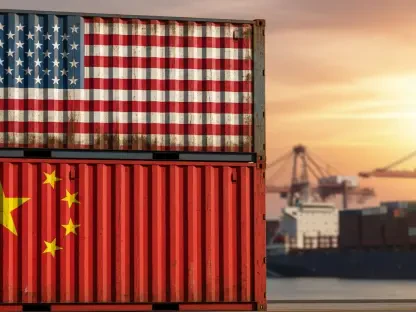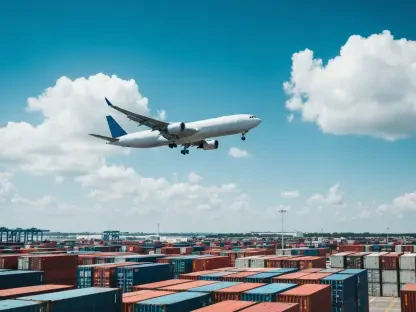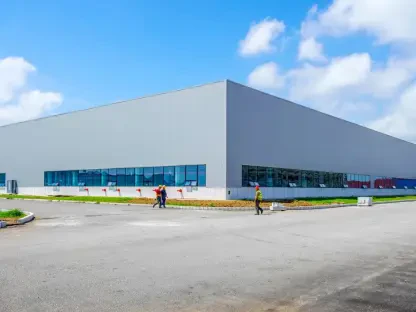Amazon’s Vulcan Robots herald a new era in warehouse automation, marking a profound evolution in how logistics are managed within the company’s expansive distribution network. At the heart of this shift lies a groundbreaking effort to replicate the efficiency and precision of human workers in performing picking and stowing tasks, crucial components of Amazon’s complex operation. The intricate nature of Amazon’s storage system—characterized by seemingly random item arrangement within bins—presents unique challenges for automation. By engineering robots capable of navigating these complexities, Amazon is not only transforming its internal logistics but setting the stage for broader advancements in robotic capabilities. This development represents a significant stride in bridging the gap between human dexterity and the calculated precision of machines, driven by sophisticated AI technologies designed to optimize warehouse processes.
Overcoming Automation Challenges
Automating warehouse tasks involves a series of sophisticated challenges, as machines traditionally struggle with tasks requiring human-like perception and manipulation prowess. Within cluttered environments, robots must identify and maneuver items with agility and precision, tasks humans excel at due to their innate adaptability. Amazon’s Vulcan Robots are specially designed to counter these challenges, relying on cutting-edge AI and machine learning systems that equip them with the necessary perception skills. These technologies enable robots to analyze complex scenarios and make informed decisions dynamically, effectively simulating the intuitive problem-solving capabilities of human workers. By training robots to interact with items strategically, Amazon aims to improve operational efficiency while ensuring seamless integration of robotic systems into existing workflows, reducing human intervention and maximizing productivity across its extensive network of warehouses.
The Complexity of “Bin Etiquette”
The concept of “bin etiquette” plays a crucial role in revolutionizing warehouse tasks, emphasizing the strategic organization and retrieval of items to boost accessibility and efficiency. Unlike human workers, who intuitively manage storage systems, robots must be rigorously taught to navigate these complexities. By leveraging artificial intelligence, Amazon is instructing its Vulcan Robots to comprehend and implement bin etiquette, an essential skill ensuring items are placed and retrieved systematically for optimal accessibility. This initiative entails programming robots to assess and adapt to the variable arrangement within bins, accounting for factors like item type, size, and packaging to facilitate smoother operations. This strategic approach enhances the effectiveness of robots in picking processes, demonstrating Amazon’s innovation in employing technology to streamline logistics.
Unraveling the Identification Puzzle
Fundamental to Amazon’s Vulcan Robots is their ability to accurately identify and extract items from densely packed bins—a task laden with challenges given the high volume and diversity of items stored. Though Amazon maintains detailed inventories, the real-world application requires robust identification skills due to factors like similar packaging and item appearance. Vulcan Robots are crafted to address these complexities through enhanced machine vision systems and AI-driven algorithms that distinguish between items rapidly and with precision to avoid mishaps. By refining these robots to handle delicate extraction operations, Amazon ensures minimal disruption to surrounding objects, optimizing the picking process without compromising the integrity of the storage system. This focus on precision and delicacy in item handling exemplifies Amazon’s commitment to upgrading its logistical operations through advanced robotics.
Human Flexibility Meets Robotic Precision
The pursuit of replicating human flexibility in robotic systems is a cornerstone of Amazon’s Vulcan Robots development, aiming for reliability and efficiency at scale. As robots integrate sophisticated AI technologies, they are expected to perform at high precision levels, minimizing errors that could escalate into substantial inefficiencies when dealing with extensive inventories. Central to this initiative is empowering robots with reliability, a critical feature given the vast scale and intricate nature of Amazon’s operations. By enhancing Vulcan Robots with advanced systems, Amazon ensures these machines can manage complex tasks seamlessly, reducing the dependence on human intervention and maximizing operational efficacy. This strategic move towards robotic precision, coupled with human adaptability, represents a significant milestone in evolving warehouse automation.
Visual Servoing: Enhancing Robot Accuracy
Essential to the Vulcan Robots’ performance is the integration of visual servoing technology, where robots utilize visual feedback mechanisms to refine their actions and correct potential errors proactively. This methodology enables robots to adjust dynamically in real-time, ensuring their operations are conducted with a high degree of accuracy and reducing the likelihood of mistakes. In a bustling warehouse environment, such precision is paramount, as even minor errors can cascade into significant inefficiencies impacting the entire logistical chain. By incorporating visual servoing, Amazon enhances the reliability of its robots, ensuring their performance aligns with the stringent standards required in its complex operational setting. This innovative approach marks a significant advancement in the automation process and underlines Amazon’s commitment to seamless, accurate operations within its warehouses.
Human-Robot Collaboration
Despite the advances in automation, Amazon acknowledges the indispensable role of human workers in addressing tasks that transcend robotic capabilities. The Vulcan Robots are designed to collaborate with human staff, ensuring that complex, unstructured tasks can be expertly managed by humans when robotic systems encounter limitations. By rerouting intricate operations to human workers, robots leverage human adaptability effectively, ensuring operational hurdles are surmounted efficiently. This collaborative approach allows robots to handle routine, straightforward tasks while humans focus on areas that require higher cognitive skills and nuanced problem-solving. Amazon’s strategy of blending human expertise with robotic precision maximizes operational efficiency and streamlines complex logistics, fostering an environment conducive to innovation and excellence.
Future Implications for Robotic Systems
The implications of Vulcan Robots extend far beyond warehouse confines, embodying a transformative blueprint for the future of robotic systems. By solving intricate logistical challenges in dynamic settings, Amazon sets the foundation for advancements in robotic manipulation applicable in diverse environments. These developments pave the way for systems adaptable to residential spaces, where similar complexities in item handling and storage prevail. The continuous refinement of robotic capabilities signals a future where the integration of AI and machine learning radically enhances operational efficiency across sectors. Amazon’s trailblazing work with Vulcan Robots exemplifies a commitment to leveraging technology to innovate and enhance logistical operations, establishing benchmarks that inspire new directions in automation.
A Hybrid Approach to Innovation
Amazon’s strategy of integrating AI advances with human oversight highlights a skillful approach that boosts operations while keeping human workers vital in logistics. This hybrid model focuses on leveraging robotic accuracy to enhance, not replace, human expertise, fostering a balanced environment where technology and human skill coexist seamlessly. Through this approach, Amazon champions a broader vision for technological integration, marking a pivot to a future where machines augment human abilities in industrial settings. This innovative blend of technology and human skills creates a framework to tackle complex logistical dilemmas, offering insights into achieving organizational excellence through automation. Amazon’s Vulcan Robots are at the forefront of redefining AI integration possibilities across diverse applications and paving the way for future strategies in adaptive automation. The continuing evolution of these technologies will redefine the future of AI and its role in enhancing human performance and operational capabilities, setting new standards for the industry.
